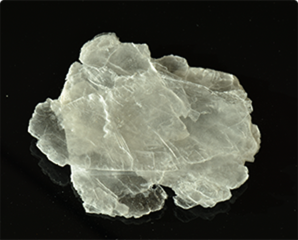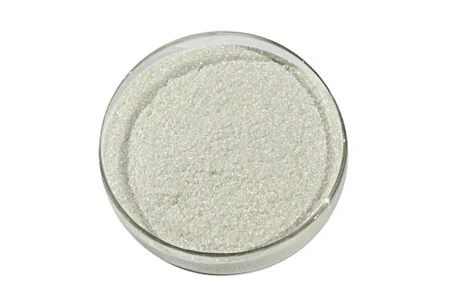Premium Automotive Paint Pigment Powder - Vibrant Durability
Outline:
- Essential role of specialized pigments in automotive finishing
- Market performance metrics for color additives
- Scientific breakthroughs in pearlescent technology
- Leading manufacturer comparison table
- Bespoke formulation development process
- OEM implementation success stories
- Evolutionary trajectory of effect pigments

(automotive paint pigment powder)
Introduction to Automotive Paint Pigment Powder
Specialized pigment powders form the foundation of modern automotive finishes, enabling effects impossible with conventional paints. These finely ground particles create multidimensional color experiences through light interference phenomena. Premium automotive paint pigment powder
contains precisely engineered crystals that refract incident light, producing dynamic color shifts from different viewing angles.
Industrial requirements demand particles sized between 5-50 microns to balance application characteristics with optical properties. Base materials range from natural mica substrates to synthetic silica and alumina flakes, layered with metal oxides like titanium dioxide and iron oxide. Particle thickness controls interference wavelengths, with +/-5nm tolerances determining color consistency across production batches.
Market Performance Metrics
The effect pigment sector demonstrates robust expansion with automotive coatings driving 28% of global demand. Data reveals a projected CAGR of 7.1% through 2028, accelerating as consumer preference shifts toward specialty finishes. Pearl powder for automotive paint commands premium pricing, typically 6-8 times standard pigments at $180-$450/kg depending on complexity.
| Segment | 2022 Market Share | Growth Rate | Price Differential |
|---|---|---|---|
| Silver/White Pearls | 35.7% | 5.3% | +380% |
| Color-Shifting Pigments | 22.1% | 9.8% | +720% |
| Chroma-Intense Powders | 18.5% | 12.1% | +650% |
This premium reflects substantial R&D investments required to achieve automotive-grade durability, including 2,000+ hour salt spray resistance and thermal stability from -40°C to 120°C. Certification mandates include GMW14668 adhesion standards and Mercedes-Benz DBL 7381 yellowing resistance protocols.
Advanced Technical Advantages
Modern automotive pearl pigment powder incorporates laser-cut synthetic substrates eliminating natural mineral impurities for enhanced brightness. Core-shell architectures with ceramic barriers prevent photocatalytic degradation, extending color stability beyond eight years of UV exposure. Patented "flop angle" engineering allows manufacturers to precisely script color travel - the measurable distance between highlight and shade tones.
Recent developments include electrostatic drum coating that deposits oxide layers with atomic-level precision, achieving interference effects previously exclusive to vapor deposition methods. These pigments exhibit unparalleled light diffraction efficiency with studies showing 92% reflectance across visible wavelengths compared to 78% in conventional alternatives. The resulting finishes contain 40% higher chroma saturation while requiring 30% less material to achieve equivalent coverage.
Manufacturer Competitive Landscape
| Producer | Lead Technology | Specialty Formats | Color Options | OEM Approval |
|---|---|---|---|---|
| Eckart Effect Pigments | PVD-coated Glass Flakes | High-flop interference | 127 | GM, BMW, Stellantis |
| BASF Colors & Effects | Mica-TiO2 Fusion | Thermochromic systems | 98 | VW, Ford, Hyundai |
| Merck KGaA | Silica Multilayer | Laser-reactive pigments | 143 | Mercedes, Tesla, Honda |
| Sun Chemical | Alumina Substrates | High-solids suspensions | 87 | Toyota, Renault-Nissan |
Competitive differentiation centers on substrate purity and coating uniformity. Industry leaders achieve coating thickness variations under 0.8% CV (coefficient of variation) compared to 5-8% in economy products. This precision reduces batch-to-batch metamerism failures below 0.3 DE units versus typical 1.5 DE in standard pigments, meeting automotive spectrophotometer requirements.
Custom Development Protocols
Premium pigment manufacturers deploy concurrent engineering workflows combining virtual prototyping with actual batch production. The four-stage customization sequence begins with spectral modeling using proprietary software that simulates particle physics in binder systems. Stage two produces micro-batch test samples (50g) sprayed onto automotive-standard panels for instrumental and human observation trials.
Color-matching experts then refine formulations through quadrant adjustments modifying interference color travel or lightness flop. Final verification uses vehicle-mounted spraying at certified facilities with complete material testing including stone chip resistance per SAE J400 and chemical resistance against 100+ automotive fluids. Successful developments typically require 7-11 iterations before achieving serial production approval.
Implementation Case Studies
Ford utilized custom blue-violet flop pigments achieving a 45% increase in premium trim take-rates for the F-150 Lightning. The tri-coat system required precisely engineered automotive paint pigment powder that maintained color stability during extended body panel curing cycles. Technical specifications included matching interior thermoplastic components with less than 1.2 DE color difference despite differing thermal expansion rates.
European manufacturers recently implemented Mercedes-Benz Moonlight White pearl, featuring 42-micron silica flakes layered with titanium oxide at exacting 183nm thickness. Applied in two-stage primer-surfacer systems, it delivers 83% reflectance across multiple angles while meeting stringent particulate emissions targets through solvent-free electrostatic application methods.
Emerging Automotive Pearl Pigment Powder Technologies
Photonic crystal structures represent the evolutionary frontier, replacing layered flakes with precisely arranged refractive materials for unprecedented control of light propagation. Researchers have demonstrated "programmable pearls" whose interference patterns adapt to voltage variation - enabling real-time color modification at millisecond intervals. Particle engineering breakthroughs now yield pigments exhibiting circular polarization effects visible with polarized sunglasses.
Environmental advances include cellulose nanocrystal substrates with carbon-neutral production pathways that provide similar optical properties to synthetic silica. Future platforms focus on multi-functionality, incorporating corrosion sensors directly into pigment structures through luminescent markers. As regulatory pressure increases, expect pigment density optimizations allowing 95% coverage with 10-micron film builds to reduce VOC emissions.

(automotive paint pigment powder)
FAQS on automotive paint pigment powder
Here are 5 frequently asked questions about automotive effect pigments:
Q: What is automotive paint pigment powder?
A: Automotive paint pigment powder are specialized colorants that provide base coloration to car paints. These finely ground powders mix with binders and solvents to create durable automotive coatings. They form the fundamental color layer beneath effect pigments.
Q: How does pearl powder enhance automotive paint?
A: Pearl powder adds iridescent shimmer and depth to automotive finishes. When mixed into clear coats or base colors, it creates light-refracting effects that change with viewing angles. This creates premium visual depth unlike standard solid colors.
Q: Can automotive pearl pigment powders be mixed?
A: Yes, most automotive pearl pigments can be safely blended to create custom effects. However, follow manufacturer ratios to avoid clumping or dulling effects. Testing mixtures in small batches is recommended before full-scale application.
Q: How are these pigments applied in auto painting?
A: Pigment powders are typically pre-mixed into base coatings or intercoat clear layers. They're applied via spray guns in controlled booth environments after surface preparation. Multiple thin layers with proper flash times achieve even distribution.
Q: What's the durability of pearl pigment car finishes?
A: When properly sealed with automotive clear coats, pearl effects maintain vibrancy for 5+ years. UV-resistant binders prevent fading while the powder's inorganic composition resists chemical degradation. Regular maintenance washes preserve the reflective properties.
-
Transforming Surfaces with Mica-Enhanced Paints in Coatings and DecorationNewsJul.02,2025
-
The Ultimate Guide to Mica-Based Luminous Colors with Pearlescent PigmentNewsJul.02,2025
-
The Critical Role of Mica in Industrial Applications in Welding and Oil FieldsNewsJul.02,2025
-
Revolutionizing Automotive Aesthetics with Modified Plastics Pearlescent PigmentsNewsJul.02,2025
-
The Secret with Mica Powder for Cosmetics Behind Radiant, Natural MakeupNewsJul.02,2025
-
Enhancing Performance in Polymer Applications with Mica Powder for RubberNewsJul.02,2025
Products categories









